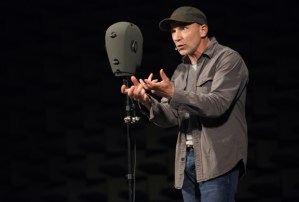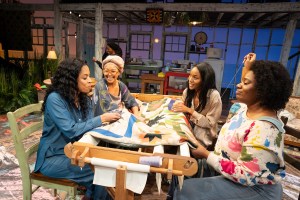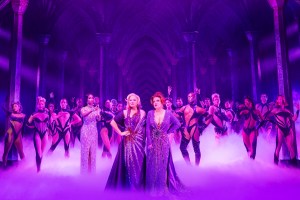Final Bow: The Encounter's Simon McBurney on Introducing Broadway to Something Unusual
Using technology and storytelling, the new work takes audiences deep into the Amazon.
As The Encounter creator Simon McBurney readily acknowledges, his show is not typical Broadway fare. In addition to having audio that's fed directly into each audience member's cranium via a set of headphones, the production features unique set design composed mostly of found items and many, many plastic bottles of water.
Though McBurney is the show's only actor, his world is populated with several characters, most of whom are played by McBurney himself. The character of his (real-life) daughter, however, is created exclusively through sound recordings of her voice, captured during conversations in the family's London home.
The play's Broadway stay was a limited run, kicking off a tour of the production, and McBurney will take his last curtain call on the John Golden Theatre on January 8. As the Tony-nominated director prepares to bring his encounter with Broadway to an end and hit the road, he took time to look back on the experience of making his Broadway acting debut.
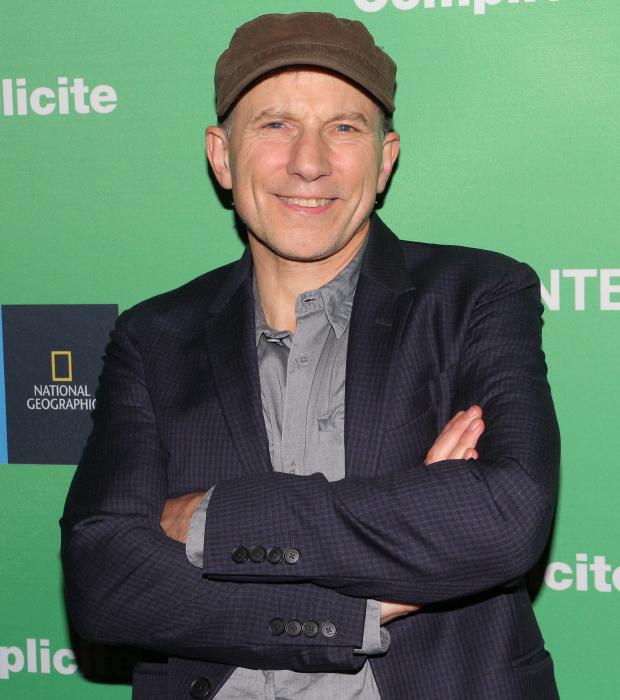
(© David Gordon)
1. What is your favorite line that you get to say?
"Some of us are friends."
2. Everyone loves inside jokes. What is the best one from your show?
Being alone onstage… you don't have anybody else to really communicate with. So the solitude actually makes it a very gentle place, and much less sort of hysterical than many theater productions that I've been in because you have everybody screaming and shouting and joking and laughing backstage to keep their energy up. Here, I've only got myself — and my wonderful stage managers and technical team.
3. Every show experiences technical difficulties. What was the worst technical difficulty experienced during your show and how was it handled?
With a show as technical as this, there are so many things that could go wrong, technically. Yet curiously, one of the simplest props there is, a bamboo stick, which is absolutely integral to everything that I do onstage, was forgotten one night. And what happens is that the stage is blocked off, there's no entrance or exit to the stage whatsoever…So I'm trying to indicate to my sound people that my bamboo is not there…They had to literally move some of the lights out of the way and somebody had to get onstage and put [on] the bamboo stick.
But frequently stuff in my show goes down, so the sound boys are talking to me a little bit like Houston talking to a space rocket. Meanwhile, the audience isn't hearing anything at all, and I'm carrying on acting.
4. What was the most "interesting" interaction you had at the stage door?
Oh my golly, there've been so many. Well, the piece is about a photographer called Loren McIntyre who was the National Geographic photographer [I impersonate], and his granddaughter turned up and his daughter and his whole family. And they said to me, "So when did you meet Loren?" I said, "Well I never met him." They said, "Well how come you had all his gestures and you sounded like him?" So that was a really fascinating evening. I mean, there is a very simple explanation for it in the sense that when you know somebody and you know somebody is imitating that person, you project onto them. But nonetheless it was a kind of eerie moment.
5. Who is the coolest person that came to see your show? (You can't say your family!)
It's probably the same answer. But also a man in his late 70s turned up. He's a retired photographer from National Geographic, and he said, "I was one of Loren McIntyre's closest friends." That was very extraordinary, too.
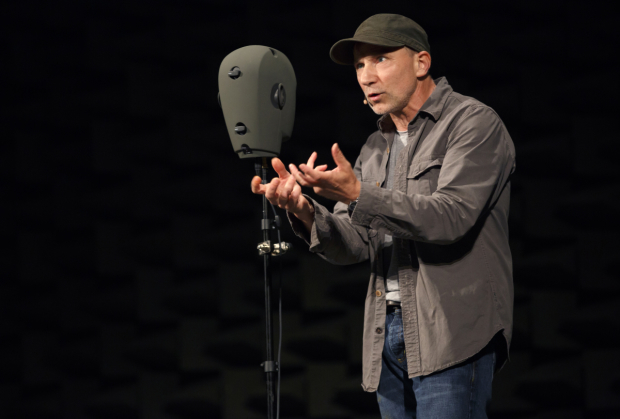
(© Joan Marcus)
6. Who or what do you consider the main influences of The Encounter?
I would say an early influence was the work of Spalding Gray, who used to sit with a microphone absolutely stock still and tell the most extraordinary stories. Another influence for me is my dad because my dad was an archeologist and he had an extraordinarily connection with anthropology. He was an American. He was from Massachusetts and his family were part Native American, so that was a big key for me in terms of the subject matter of the piece.
7. What aspect of the book Amazon Beaming, on which your show is based, were you most eager to capture in The Encounter?
The question of whether we in our society here and now really see the world as it is. In other words, have we got it right in the way we approach the world or are there other people that we should listen to on the edges of our world whose voices we should be able to hear and sometimes we can't?
8. Has your daughter seen the show? What does she think of being featured?
Yes, she has seen the show and she loves it. One Sunday she sat in and at the end of the show she came onstage and the reaction in the audience was simply incredible, because in a way it made them understand that everything that they had seen was real, and as a consequence they were sort of absolutely bowled over.
9. What is the idea behind all of the water bottles you have onstage, aside from hydration?
The point about the water is, that is the way that we see water in our society now. If you like, the set is made up of the detritus of our world, trash and garbage. The sense of waste which is at the heart of our society should just be jogged or not jogged. Without making a big point on it, I want people to think about it or wonder why there are so many water bottles there onstage at the very least.
10. How has making your Broadway acting debut been different than you expected?
It's very demanding — perhaps [even] more demanding than I expected, with a more demanding audience, because when people set aside time and money to come and see something on Broadway, they very reasonably expect you to deliver. This piece is in some ways not standard Broadway fair. But to see it on Broadway is important because we get to reach people who would never normally choose to see something like this. Anything between 40 and 50 thousand people have seen it, which is an incredible thing.
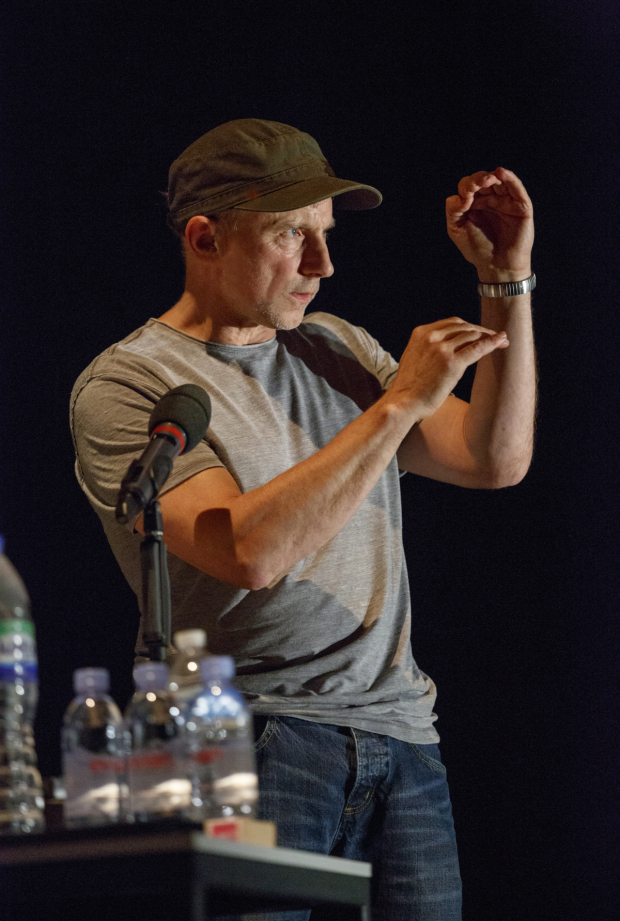
(© Joan Marcus)




